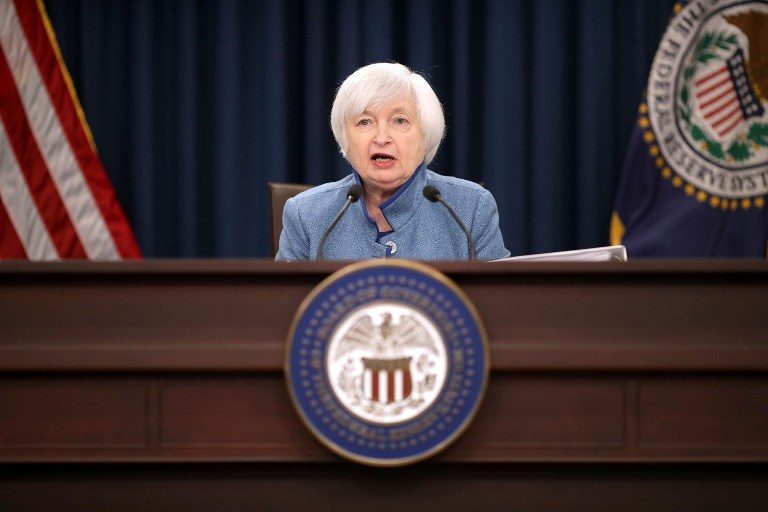SUMMARY
This is AI generated summarization, which may have errors. For context, always refer to the full article.

WASHINGTON, USA – US central bankers say they may need to raise interest rates faster than planned due to “considerable uncertainty” linked to Donald Trump’s fiscal stimulus plans, which could fan inflation.
Minutes of the Federal Reserve’s final 2016 policy meeting, published on Wednesday, January 4, illustrate the complex balancing act it faces as the Republican billionaire prepares to take office on January 20.
The president-elect’s pledge to slash taxes and ramp up infrastructure spending could boost demand above sustainable levels, “potentially necessitating somewhat tighter monetary policy than currently anticipated,” many participants in the December 13-14 meeting said.
Members of the policy-setting Federal Open Market Committee last month increased the benchmark US lending rate for just the second time in a decade, and also signaled the likelihood of 3 rate increases in 2017, one more than previously expected.
That came as some surprise since the quarterly economic forecasts did not change appreciably, and it was seen as the Fed’s first reaction to Trump’s November 8 election.
Many analysts expect the central bank will have to raise rates even faster if Trump’s infrastructure spending and tax cuts fuel faster inflation.
Participants judged that the prospect of higher than expected growth – and therefore higher inflation – “increased as a result of prospects for more expansionary fiscal policies.”
About half incorporated an assumption of more expansionary fiscal policy in their forecasts.
With the unemployment rate seen as more likely under Trump to remain low, the FOMC “might need to raise the federal funds rate more quickly than currently anticipated … to stem a potential buildup of inflationary pressures,” many of the participants said.
‘Gradual adjustments’
Despite these risks, the minutes repeatedly said the central bank expects it can continue to make only “gradual adjustments” in the interest rate, although they emphasized the need to adjust course “as economic conditions evolve.”
The FOMC voted unanimously last month to increase the key federal funds rate to a range of 0.5 to 0.75%, a year after the last rate hike.
In their quarterly economic projections released in December, Fed officials anticipated 3 rate increases in 2017, to reach 1.4% at the end of the year. It would then rise at the close of 2018 to 2.1%.
US economic growth is expected to be about 2% this year and next, while inflation is expected to gradually reach the Fed’s 2% target.
Uncertainty the main theme
Analysts said uncertainty was the main theme of the central bank’s discussions, which means the outlook for policy could change quickly.
“Until the extent, structure, and timing of fiscal easing is known, the Fed’s forecasts for both the economy and rates have to be considered tentative,” Ian Shepherdson, chief economist at Pantheon Macroeconomics, said in a commentary.
Shepherdson, who expects the next rate hike in March rather than at the late January meeting, noted that the idea that rates will rise at a gradual pace is “open to wide interpretation and a substantial fiscal easing could change things quickly.”
Mizuho Chief US Economist Steven Ricchiuto noted that while some FOMC participants included the expected fiscal stimulus in their forecasts “the fact that about half of the members of the committee has discounted some stimulus from Trump seems to have been greeted positively” by financial markets.
Fed officials highlighted low US productivity growth in the policy discussion, as this can put the brakes on potential growth.
Federal Reserve Chair Janet Yellen has said government spending on programs that increase the economy’s productive capacity would be useful, such as enhanced education, training, and workforce development. – Rappler.com
Add a comment
How does this make you feel?
There are no comments yet. Add your comment to start the conversation.